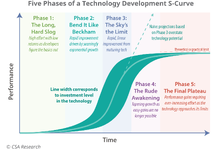"At this point? Absolutely not. Starlink needs clear line-of-sight to the sky so it’s useless under dense canopy or in a deep canyon and a full canopy. What happens when you snap your leg on a packout in some hellhole covered in timber? Neither Starlink nor iPhone satellite messaging offer weather forecasts, tracking, or reliable 2 way communication in shitty terrain with dense canopy. inReach is built for abuse and they are fully waterproof and better battery life compared to phone.
Starlink + T-Mobile might be great for sending a text from an open ridgetop, but it’s not replacing inReach in the backcountry anytime soon.
Quotes pulled directly from beta testers using the T-Mobile Starlink Serice have stated regular interruptions in light or partial tree cover. Testers reported frequent interruptions, degraded performance and total signal loss in heavy tree cover. Some said that you needed a complete unobstructed view of the sky.
One tester reported that they had to relocate from remote canyon environments to get a clear view of the sky for it work. Another user stated that once they got further into the front range performance became sporadic with delays of 7-10 minutes, signal dropped intermittently even with clear view of sky and once in dense terrain it caused severe reliability issues.


